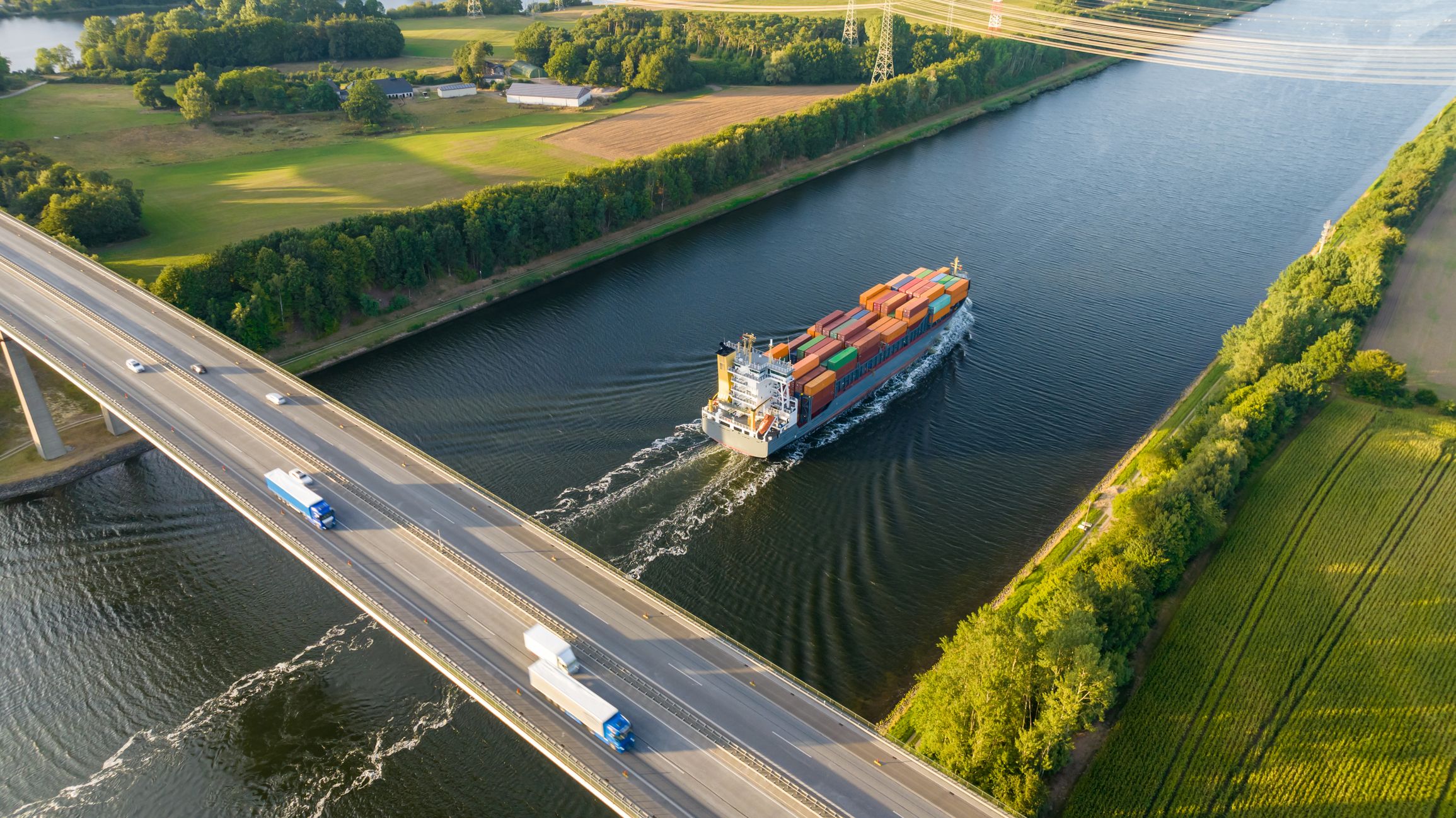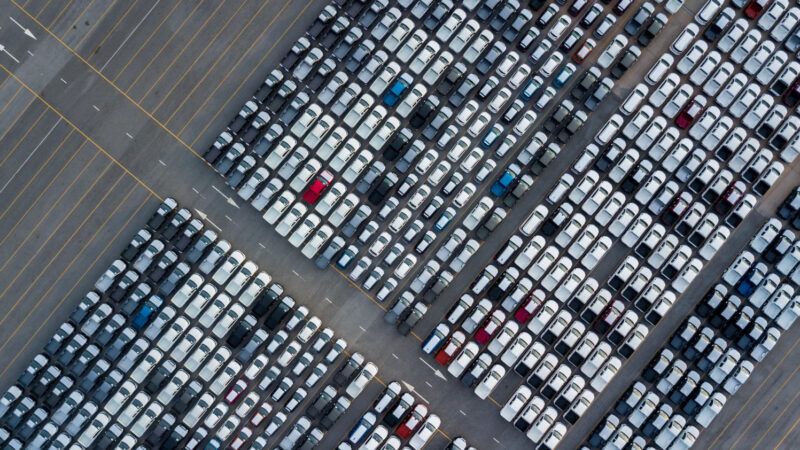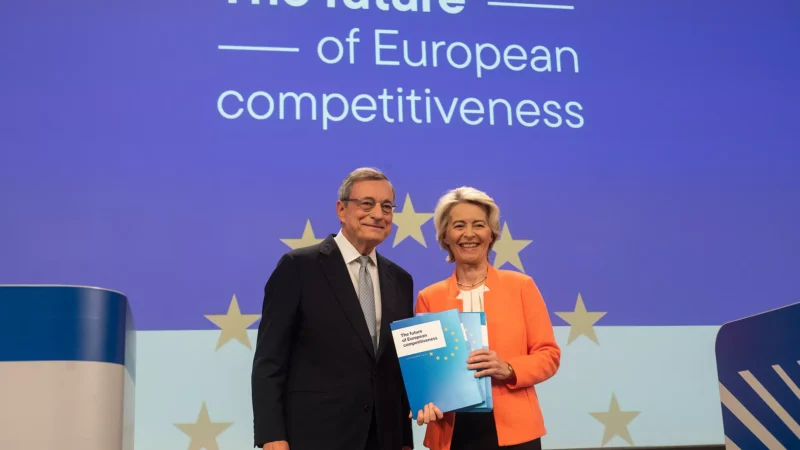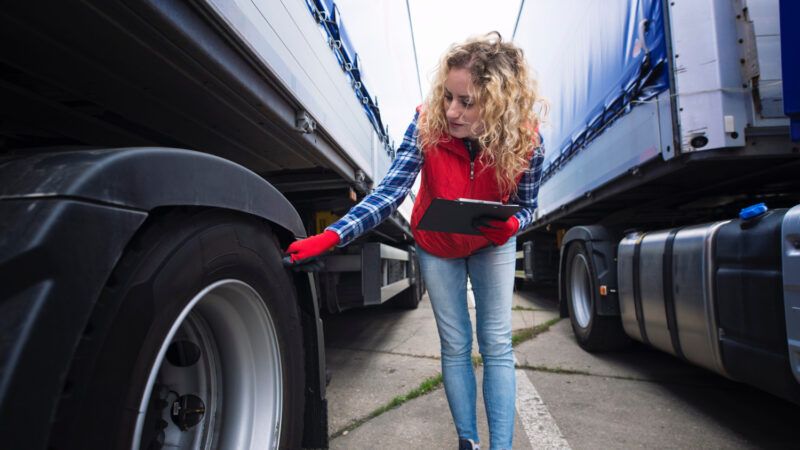 To promote the railway sector, the European Union is financing, through loans and grants, projects for improving the railway network in Europe. (Getty Images)
To promote the railway sector, the European Union is financing, through loans and grants, projects for improving the railway network in Europe. (Getty Images)
European investment in the rail freight market and intermodality: is Europe betting on the wrong (iron) horse?
Rail is the most sustainable means of transport for domestic freight trade. For this reason, Europe has invested billions of euros in infrastructure over the last decade. The question is: are these investments yielding positive results? We analyse European investment and the evolution of rail freight traffic to assess the effectiveness of this investment, with the aim of identifying shortcomings and possible avenues for future development to strengthen this sector.

Matteo Boschian Cuch is a researcher at CENIT and PhD student in mobility and sustainable transport at the Port of Barcelona.
 To promote the railway sector, the European Union is financing, through loans and grants, projects for improving the railway network in Europe. (Getty Images)
To promote the railway sector, the European Union is financing, through loans and grants, projects for improving the railway network in Europe. (Getty Images)
THE RAIL FREIGHT SECTOR
In this article, we present an analysis of European investment in the railway sector, which has consisted of billions of Euros in loans and grants to increase the modal share of trains. Simultaneously, we examine the evolution of rail freight traffic to assess the effectiveness of these capital expenditures, with the aim of identifying shortcomings and potential avenues for future development that will bolster this sector.
The transport sector is responsible for a quarter of Greenhouse Gases emissions in Europe. Compared to other means of transport, trains are the most sustainable option for inland freight trade, according to the European Environment Agency. For this reason, European Union policies have encouraged a modal shift away from roads towards railways or inland waterways (IWW). Moreover, external costs related to railways are lower than those produced by Heavy-Goods Vehicles (HGV) as highlighted in Figure 1, based on the European Commission “Handbook on the external costs of transport” (2019). In addition to environmental sustainability, trains are safer compared to road vehicles, reducing accidents on the EU's road networks. Finally, railways contribute to reducing road traffic congestion.
On the other hand, the service provided by railway operators is less flexible since it is scheduled and not door-to-door. Additionally, the infrastructure required for rail transport is more complex and expensive, and not homogeneous across European countries. In fact, there are differences from a technical perspective in electrification standards, in signaling systems and railway gauges, and from an administrative point of view, given that every country has its own Infrastructure Manager. All these shortcomings increase the complexity of interoperability among EU countries. Comparing costs, intermodal transport is 56% more expensive than road transport for shippers, based on European Commission data from 2017.
EUROPEAN POLICIES AND GOALS
To promote the railway sector, the European Union is financing, through loans and grants, projects for improving the railway network in Europe. These investments will help to undercome the barriers and bottlenecks highlighted above.
The EU regulation 1315/2013 sets the Trans-European Transport Network (TEN-T) policy with the aim of creating an instrument useful for the development of transport infrastructure among EU countries, comprising all means of transport. The TEN-T network is composed of nine corridors that form the Core network and in addition, there are two horizonal priorities: the Motorways of the Seas (MoS) and the European Rail Traffic Management System (ERTMS).
Furthermore, in Europe there are eleven Rail Freight Corridors (RFCs) created to increase the competitiveness of freight rail transport. The challenges of the RFCs are:
- Strengthening cooperation among infrastructure managers to increase interoperability and infrastructure development.
- Striking the right balance between passenger and freight traffic along the RFCs, to guarantee a better service for freight traffic in terms of punctuality.
- Promoting intermodality through the integration of terminals in the corridor management and development.

In the White Paper “Roadmap to a Single European Transport Area-Towards a competitive and resource efficient transport system” published in 2011 by the EU, the European goals for reducing the transport impacts were set. Regarding freight transport, the goal is to shift 30% of road freight traffic over long distance (over 300 kilometers) to more sustainable solutions, such as inland waterways or railways by 2030. Looking towards 2050, the objective is to achieve a 50% shift.
The European Union has invested a huge amount of funds in the transport sector in recent years. The Connecting Europe Facility (CEF) program, managed by the European Climate, Infrastructure and Environment Executive Agency (CINEA), allocated €23.2 billion in grants for supporting transport projects in the period between 2014-2020.
The CEF for transport aims to finance projects for modernising and completing the TEN-T. To achieve this goal, 88% of the total amount was allocated to the development of the Core Network. Given the importance of reducing the environmental footprint of the transport sector, 70 % of the CEF’s grants were assigned to railway projects, both for freight and passengers. To achieve the Green Deal goals another €25.8 billion are available for the period 2021-2027.
In addition to these funds, for recovering the pandemic crisis effects the Europe provided additional funds with the Recovery and Resilience Facility policy, that Member States can allocate also to transport sector.
Moreover, the European Investment Bank (EIB) has invested in the modal shift to railways in supporting projects for an amount of €40 billion in the decade 2011-2020, contributing to infrastructure development, both for tracks and stations and in the purchase of new rolling stock.
To achieve the European targets of doubling the market share of rail freight by 2050, combined traffic must grow by 5% per year.
THE RESULTS OF EU INVESTMENT IN THE RAIL FREIGHT SECTOR
Despite the promotion and the capital investment of the European Union in this sector, the railway modal share of inland freight transport, since 2010 has slightly decreased, in favor of the road sector as shown in Figure 2.
Looking more closely at the data, when we examine a sample of European Countries in the same time window, the rail freight modal share is stable in all cases as we can see in Figure 3, apart from in Poland, where it drops. In Spain, the Netherlands, France, and Germany the share holds constant, while Italy and Croatia show a slight increase, even if it is not sufficient.
WHAT ABOUT INTERMODALITY?
Intermodal freight transport is a method for moving goods in Intermodal Transport Units (ITUs), which can be a container, semi-trailer, or swap-body and employ various means of transport such as trucks, rail, and ships.
In the period 2014-2020, Europe through the European Regional and Development Fund (ERDF), the Cohesion Fund (CF) and the Connecting Europe Facility (CEF), has invested €1.1 billion in projects concerning intermodal transport, as stated in “Intermodal freight report” of the European Court of Auditors (ECA) of 2023. This report summarizes the budget allocated for intermodality projects from the funds of the Recovery and Resilience Facility, by a sample of EU Member States. While significant differences exist, as illustrated in Figure 4, it is essential to consider that the funding amounts received vary among different EU countries.
Analyzing the traffic figures, the combined transport traffic registered a growth in the last 10 years in terms of tons-kilometres and consignments, as reported in the International Union for Road-Rail Combined Transport (UIRR) annual report of 2022-2023. However, in 2022 there was a contraction in traffic compared to the previous year due to the decrease of border crossings outside Europe caused by the war in Ukraine. In this report, the decline in competitiveness of combined transport is explained by three reasons:
- The stability of the fossil fuel market compared to the electricity market.
- Rail infrastructure projects, financed by the Recover and Resilience Facility funds, and the increasing of prioritized passenger traffic.
- The economic slowdown.
To achieve the European goals of doubling the rail freight market share by 2050, combined traffic needs to grow by 5% each year. To obtain this result, the UIRR highlights that the requirements are €16.5 billion of annual investment in rail infrastructure modernization, €1.5 billion of annual investment into intermodal facilities and a supportive regulatory framework for increasing the quality and quantity of intermodal freight trains.
PORT AND RAILWAY INTERACTION
The maritime sector is relevant for European trade. For this reason, for increasing the rail modal share is important to focus the attention on the railway’s connection to European ports. The European Union Agency for Railways (ERA) analysed the current situation in the report “Fostering the rail sector through the European Green Deal: Rail-port synergies” through surveys sent to the European ports. From the gathered responses, it becomes evident that numerous ports consider their railway connectivity a pivotal factor in enhancing their competitiveness. To improve rail-port relations, the following key points should be developed:
- Infrastructure development inside the railway network, increasing capacity and electrifying the tracks to improve the connections with the main railway network. It is necessary to establish a good connection between the port’s network and the national railway network, supported by coordination between infrastructure managers to improve the main network's bottlenecks. Finally, a sufficient inland terminal network is necessary for fulfilling the demand.
- Digitalization is fundamental for data exchange, which will result in better coordination among stakeholders of rail activities.
- The Port’s railway operations management should be performed by the Port authority, by a private company or by the national infrastructure manager. Depending on the managing model chosen by the port, the flexibility and autonomy can vary, affecting the rail services provided.
- Policy and regulatory frameworks are fundamental for increasing the railway modal shift. Tax incentives by public authorities are necessary, since the priority given to the passenger sector from an operational and investment perspective has a negative impact on the freight trade.
FUTURE EXPECTATIONS?
In conclusion, Europe is investing billions of Euros in the railway sector, but the growth of the rail freight modal share falls short of achieving the established objectives. This article emphasizes the need for a review of European investment policies within the railway sector.
Additional funding is essential to enhance the portion of freight transported by trains, either through the construction of dedicated rail networks or by effectively managing the existing network to balance passenger and freight services. The conventional network's inclination towards prioritizing passenger services has damaging effects on the efficiency of freight transportation, leading to increased costs, reduced attractiveness, and diminished cargo capacity, thus elevating the likelihood of delays.
Additionally, addressing infrastructure deficiencies at cross-border sections is crucial to enhance interoperability between European countries. In summary, the mere allocation of funds is insufficient; a comprehensive regulatory and policy framework is indispensable to effectively promote and incentivize this sector.
Moreover, we should consider whether the railway is the optimal solution for decarbonizing transport sector, considering modern technologies that allow for the reduction in emissions and congestion on the road, such as truck platooning, automated vehicles, and alternatives fuels. For sure, there is not just one solution, but a combination of different technologies and means of transport.





